Volume 3 | Number 2 | November 2011
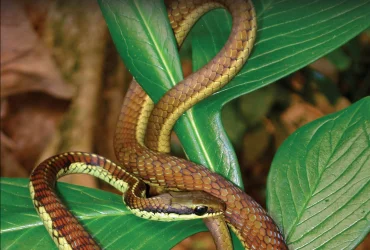 v3i2.52
v3i2.52ISSN: 1800-427X (print)
eISSN: 1800-427X (online)
DOI:10.47605/tapro.v3i2.52
Submitted date: 8 August 2011
Accepted date: 30 November 2011
Published date: 20 December 2011
Pp. 93–95.
A NEW SPECIES OF Sonerila (MELASTOMATACEAE) FROM THE WESTERN GHATS - INDIA
M. Murugesan* & V. Balasubramaniam
*Corresponding author. E-mail: taxonmurugesh@gmail.com
Abstract
A new species of Sonerila Roxburgh (Melastomataceae) is described and illustrated. Sonerila nayarana sp. nov. occurs in the Velliangiri hills, the Western Ghats in the Coimbatore District, Tamil Nadu, India. It seems most similar to Sonerila parameswaranii Ravikumar & Lakshmanan, 1999.
Key words : taxonomy, Sonerila nayarana, Coimbatore, Tamil Nadu
Section Editor: Prasad Senadheera
eISSN: 1800-427X (online)
DOI:10.47605/tapro.v3i2.52
Submitted date: 8 August 2011
Accepted date: 30 November 2011
Published date: 20 December 2011
Pp. 93–95.
A NEW SPECIES OF Sonerila (MELASTOMATACEAE) FROM THE WESTERN GHATS - INDIA
M. Murugesan* & V. Balasubramaniam
*Corresponding author. E-mail: taxonmurugesh@gmail.com
Abstract
A new species of Sonerila Roxburgh (Melastomataceae) is described and illustrated. Sonerila nayarana sp. nov. occurs in the Velliangiri hills, the Western Ghats in the Coimbatore District, Tamil Nadu, India. It seems most similar to Sonerila parameswaranii Ravikumar & Lakshmanan, 1999.
Key words : taxonomy, Sonerila nayarana, Coimbatore, Tamil Nadu
Section Editor: Prasad Senadheera
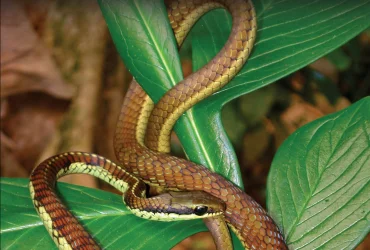 v3i2.51
v3i2.51ISSN: 1800-427X (print)
eISSN: 1800-427X (online)
DOI:10.47605/tapro.v3i2.51
Submitted date: 10 May 2011
Accepted date: 24 November 2011
Published date: 20 December 2011
Pp. 86–92.
TAXONOMIC STATUS AND STUDIES OF THREE HIGH ALTITUDE BUTTERFLIES Polyommatus LATREILLE, 1804 AND A NEW RECORD OF P. florenciae (TYTLER, 1926) FROM INDIA
Avtar Kaur Sidhu*, Charn Kumar & H.S. Rose
*Corresponding author. E-mail: avtarkaur2000@gmail.com
Abstract
The status of three species of high altitude butterflies, Polyommatus Latreille, 1804, from the Indian Himalayas has been assessed and the species P. florenciae (Tytler, 1926) has been recorded for the first time from India. Details of the genitalia for each species are illustrated and described for the first time.
Key words : Lycaenidae, Polyommatinae, genitalia, Himalayas, taxonomy, Lepidoptera
Section Editor: Jeffrey Miller
eISSN: 1800-427X (online)
DOI:10.47605/tapro.v3i2.51
Submitted date: 10 May 2011
Accepted date: 24 November 2011
Published date: 20 December 2011
Pp. 86–92.
TAXONOMIC STATUS AND STUDIES OF THREE HIGH ALTITUDE BUTTERFLIES Polyommatus LATREILLE, 1804 AND A NEW RECORD OF P. florenciae (TYTLER, 1926) FROM INDIA
Avtar Kaur Sidhu*, Charn Kumar & H.S. Rose
*Corresponding author. E-mail: avtarkaur2000@gmail.com
Abstract
The status of three species of high altitude butterflies, Polyommatus Latreille, 1804, from the Indian Himalayas has been assessed and the species P. florenciae (Tytler, 1926) has been recorded for the first time from India. Details of the genitalia for each species are illustrated and described for the first time.
Key words : Lycaenidae, Polyommatinae, genitalia, Himalayas, taxonomy, Lepidoptera
Section Editor: Jeffrey Miller
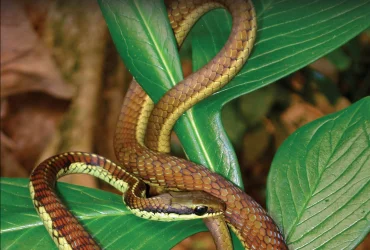 v3i2.50
v3i2.50ISSN: 1800-427X (print)
eISSN: 1800-427X (online)
DOI:10.47605/tapro.v3i2.50
Submitted date: 7 October 2011
Accepted date: 30 November 2011
Published date: 20 December 2011
Pp. 77–85.
A NEW SPECIES OF Dendrelaphis (SERPENTES: COLUBRIDAE) FROM THE WESTERN GHATS - INDIA
Gernot Vogel* & Johan Van Rooijen
*Corresponding author. E-mail: gernot.vogel@t-online.de
Abstract
A new species of the colubrid genus Dendrelaphis Boulenger 1890 is described from the Western Ghats, India. Dendrelaphis girii sp. nov. resembles Dendrelaphis bifrenalis (Boulenger, 1890) which inhabits Sri Lanka. It differs from the latter predominantly in the absence of a ventrolateral stripe, the much narrower and shorter postocular stripe and the broader snout. The description of D. girii sp. nov. underscores the notion that Sri Lanka and the Western Ghats are faunally more distinct than previously thought.
Key words : Dendrelaphis girii sp. nov., Dendrelaphis bifrenalis, taxonomy, reptilia, Sri Lanka
Section Editor: Indraneil Das
eISSN: 1800-427X (online)
DOI:10.47605/tapro.v3i2.50
Submitted date: 7 October 2011
Accepted date: 30 November 2011
Published date: 20 December 2011
Pp. 77–85.
A NEW SPECIES OF Dendrelaphis (SERPENTES: COLUBRIDAE) FROM THE WESTERN GHATS - INDIA
Gernot Vogel* & Johan Van Rooijen
*Corresponding author. E-mail: gernot.vogel@t-online.de
Abstract
A new species of the colubrid genus Dendrelaphis Boulenger 1890 is described from the Western Ghats, India. Dendrelaphis girii sp. nov. resembles Dendrelaphis bifrenalis (Boulenger, 1890) which inhabits Sri Lanka. It differs from the latter predominantly in the absence of a ventrolateral stripe, the much narrower and shorter postocular stripe and the broader snout. The description of D. girii sp. nov. underscores the notion that Sri Lanka and the Western Ghats are faunally more distinct than previously thought.
Key words : Dendrelaphis girii sp. nov., Dendrelaphis bifrenalis, taxonomy, reptilia, Sri Lanka
Section Editor: Indraneil Das
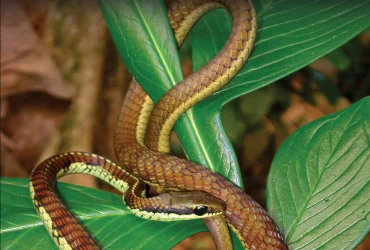 v3i2.49
v3i2.49ISSN: 1800-427X (print)
eISSN: 1800-427X (online)
DOI:10.47605/tapro.v3i2.49
Submitted date: 30 July 2011
Accepted date: 10 October 2011
Published date: 20 December 2011
Pp. 69–76.
A PRELIMINARY SURVEY OF THE REPTILE FAUNA IN NILGALA FOREST AND ITS VICINITY, MONARAGALA DISTRICT, SRI LANKA
D.M.S. Suranjan Karunarathna* & A.A. Thasun Amarasinghe
*Corresponding author. E-mail: dmsameera@gmail.com
Abstract
Nilgala Conservation Forest Area (NCFA) is an intermediate zone forest situated in the south east of Sri Lanka. During our four-year study we recorded 70 species of reptiles, which represents about 33% of the total Sri Lankan reptile fauna. This number includes eighteen species that are recorded from the NCFA for the first time and ten nationally threatened species. Ten unidentified species were also recorded during the survey period. The results of this study indicate that the Nilgala forest area supports a rich reptile faunal diversity. Unfortunately, this important forest is threatened by fire, illegal logging, chena cultivation, rubber plantation, granite rock blasting, gem mining and road kills. It should be considered an area of high conservation priority.
Key words : Sri Lanka, Intermediate zone, savannah, reptiles, threats, ecology, conservation
Section Editor: John Rudge
eISSN: 1800-427X (online)
DOI:10.47605/tapro.v3i2.49
Submitted date: 30 July 2011
Accepted date: 10 October 2011
Published date: 20 December 2011
Pp. 69–76.
A PRELIMINARY SURVEY OF THE REPTILE FAUNA IN NILGALA FOREST AND ITS VICINITY, MONARAGALA DISTRICT, SRI LANKA
D.M.S. Suranjan Karunarathna* & A.A. Thasun Amarasinghe
*Corresponding author. E-mail: dmsameera@gmail.com
Abstract
Nilgala Conservation Forest Area (NCFA) is an intermediate zone forest situated in the south east of Sri Lanka. During our four-year study we recorded 70 species of reptiles, which represents about 33% of the total Sri Lankan reptile fauna. This number includes eighteen species that are recorded from the NCFA for the first time and ten nationally threatened species. Ten unidentified species were also recorded during the survey period. The results of this study indicate that the Nilgala forest area supports a rich reptile faunal diversity. Unfortunately, this important forest is threatened by fire, illegal logging, chena cultivation, rubber plantation, granite rock blasting, gem mining and road kills. It should be considered an area of high conservation priority.
Key words : Sri Lanka, Intermediate zone, savannah, reptiles, threats, ecology, conservation
Section Editor: John Rudge
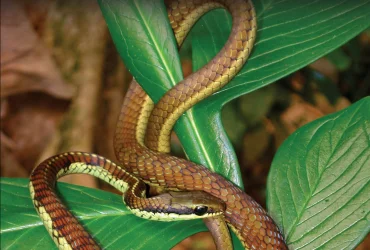 v3i2.48
v3i2.48ISSN: 1800-427X (print)
eISSN: 1800-427X (online)
DOI:10.47605/tapro.v3i2.48
Submitted date: 01 April 2011
Accepted date: 22 August 2011
Published date: 20 December 2011
Pp. 52–68.
STATUS OF THE MAMMAL FAUNA IN SUNDARBAN TIGER RESERVE, WEST BENGAL - INDIA
Jayanta Kumar Mallick*
*E-mail: jayantamallick2007@rediffmail.com
Abstract
Sundarban Tiger Reserve (2,584.89 km2) in West Bengal is a part of the world’s largest estuarine wetland and the only mangrove tigerland, spread over India and Bangladesh. Its plant associations exhibit a great generic/species diversity and offers habitats of many rare and endangered mammals. The dense thickets of Heritiera fomes, Nypa fruticans and Phoenix paludosa form the prime habitat of Panthera tigris tigris. This tigerland is also the abode of a good number of its prey and other associated mammal species. A one-year (January-December 2010) study was conducted with the frontline forest department staff to investigate the distribution and status of the mammalian species found in this thirty-eight years’ old tiger conservation area, involving literature review, questionnaire and ground surveys. This has revealed shrinkage of the mangrove swamp habitat and a number of mammal species in decline due to extensive anthropogenic and natural threats. Out of forty nine extant species recorded (eight orders: twenty three families), four are globally endangered, four vulnerable and two near threatened as per IUCN Red List. Alarmingly, fifteen mammal species were found on only rare occasions. In addition, six species (two orders: three families) had become extinct during the last two centuries. Though distributed over all forest block areas, the frequency of tigersighting was recorded more from Sajnekhali Wildlife Sanctuary and the buffer areas than Sundarban National Park or the core area. High-priority wildlife conservation, proper implementation of the tiger action plan, further infrastructural development and effective joint forest management are essential for saving this tigerland.
Key words : Tigerland, world heritage, wetland, distribution, threats, conservation
Section Editor: Lee Harding
eISSN: 1800-427X (online)
DOI:10.47605/tapro.v3i2.48
Submitted date: 01 April 2011
Accepted date: 22 August 2011
Published date: 20 December 2011
Pp. 52–68.
STATUS OF THE MAMMAL FAUNA IN SUNDARBAN TIGER RESERVE, WEST BENGAL - INDIA
Jayanta Kumar Mallick*
*E-mail: jayantamallick2007@rediffmail.com
Abstract
Sundarban Tiger Reserve (2,584.89 km2) in West Bengal is a part of the world’s largest estuarine wetland and the only mangrove tigerland, spread over India and Bangladesh. Its plant associations exhibit a great generic/species diversity and offers habitats of many rare and endangered mammals. The dense thickets of Heritiera fomes, Nypa fruticans and Phoenix paludosa form the prime habitat of Panthera tigris tigris. This tigerland is also the abode of a good number of its prey and other associated mammal species. A one-year (January-December 2010) study was conducted with the frontline forest department staff to investigate the distribution and status of the mammalian species found in this thirty-eight years’ old tiger conservation area, involving literature review, questionnaire and ground surveys. This has revealed shrinkage of the mangrove swamp habitat and a number of mammal species in decline due to extensive anthropogenic and natural threats. Out of forty nine extant species recorded (eight orders: twenty three families), four are globally endangered, four vulnerable and two near threatened as per IUCN Red List. Alarmingly, fifteen mammal species were found on only rare occasions. In addition, six species (two orders: three families) had become extinct during the last two centuries. Though distributed over all forest block areas, the frequency of tigersighting was recorded more from Sajnekhali Wildlife Sanctuary and the buffer areas than Sundarban National Park or the core area. High-priority wildlife conservation, proper implementation of the tiger action plan, further infrastructural development and effective joint forest management are essential for saving this tigerland.
Key words : Tigerland, world heritage, wetland, distribution, threats, conservation
Section Editor: Lee Harding
Hubungi Kami
The ultimate aim of the journal is to provide an effective medium for communication of the latest and best scientific information.
Copyright © 2020 Taprobanica. All Rights Reserved
Jasa Pembuatan Website by IKT




